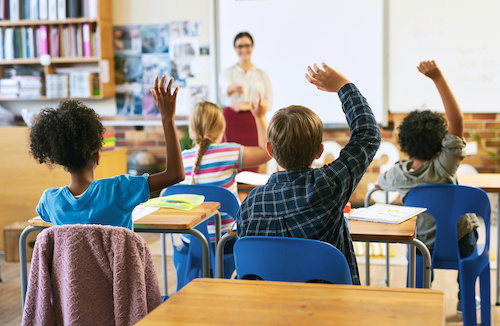Key points:
- Classroom learning is most impactful with highly-trained teachers and proven instructional strategies
- See article: 5 strategies for turning boredom into brilliance
- See article: Innovative ideas for school libraries
- For more news on classroom learning, visit eSN’s Innovative Teaching page
There’s no denying it: Classroom learning is changing. Classrooms today could be in person, online, or hybrid. Classrooms may be student-driven, might focus on project-based learning, or may offer learning through a specialized topic such as STEM.
And while today’s classrooms look different, students and teachers remain at the heart of classroom learning.
Let’s take a look at a few trends in classroom learning and how these trends are impacting the future of education.
What is a learning activity in a classroom?
Project-based learning is one of the most sensible solutions to the variety of needs teachers must try to meet for each student because it allows student autonomy and targets specific areas. The concept hinges on the idea that students complete a project on a single topic–ideally, they choose their own topics to promote interest and motivation–and, in doing so, dive deeply into that topic, ultimately becoming an expert on it. Projects can be individually completed or a collaborative effort, promoting group work and social skills. Because students control their learning in the PBL approach, differentiation is simple, if needed at all, as students conduct their own learning at their own pace and present their learning in a mode that makes sense to them. One of the most significant benefits of PBL is that it addresses students’ questions as they learn, fostering curiosity and perseverance in
learning as opposed to having to stick to a specific curriculum. Here’s how one educator is advocating for more PBL in classrooms through effective teaching strategies.
What is an example of learning by doing in the classroom?
Classroom learning is much more successful when students are engaged in that learning via interactive classroom activities. Whether students take the bus to school or run downstairs to the computer room, keeping them engaged in their classwork throughout the day is the best way for them to master content and progress to the next level of their education. But not all students do this, or at least, do it well. So how can teachers and principals up their game to keep students engaged and make sure each child stays focused and ready to learn? A teacher with more than 20 years of experience offers 6 tips to help keep students engaged throughout the day, whether they are in a traditional or a virtual classroom.
What class activities help you learn the most?
Edtech tools are invaluable when implemented correctly by trained educators–and they can help reluctant students come out of their shell. Engaging shy students in K-12 classrooms can be a rewarding challenge, and edtech is a valuable tool in creating inclusive and interactive learning environments. Many educators are merging one with the other, discovering strategies to use edtech to engage shy students. By leveraging edtech tools and educational activities for students, teachers can foster participation, build confidence, and provide tailored learning experiences for excellent classroom learning. Explore these five strategies to use edtech to engage shy students.
What is an advantage of classroom learning?
Classroom learning doesn’t have to happen indoors. COVID was a national window-walled classroom moment. In fall 2020, many districts, schools, and individual educators across the country took to learning outdoors out of necessity–and their learning activities and strategies blossomed. Green Schoolyards America led a beautiful collective effort to document outdoor learning practices in a National Outdoor Learning Library. Learn how one teacher is dedicated to using the outdoors as the perfect classroom learning environment.
What is the learning process in class?
Classroom learning is most impactful when students feel safe and can be their true selves in their classrooms. Every educator knows that weirdness is what makes our students grow. After all, curiosity, creativity, and critical thought don’t bloom in a stagnant mind. So instead of wringing our hands over the social ecosystem, let’s encourage our students to think weirder through fun activities for students in the classroom. Here are just three benefits to letting students embrace their inner weirdness.
- Friday 5: Virtual field trips - April 26, 2024
- Google, MIT RAISE launch no-cost AI training course for teachers - April 26, 2024
- 4 ways to support work-based learning - April 23, 2024

